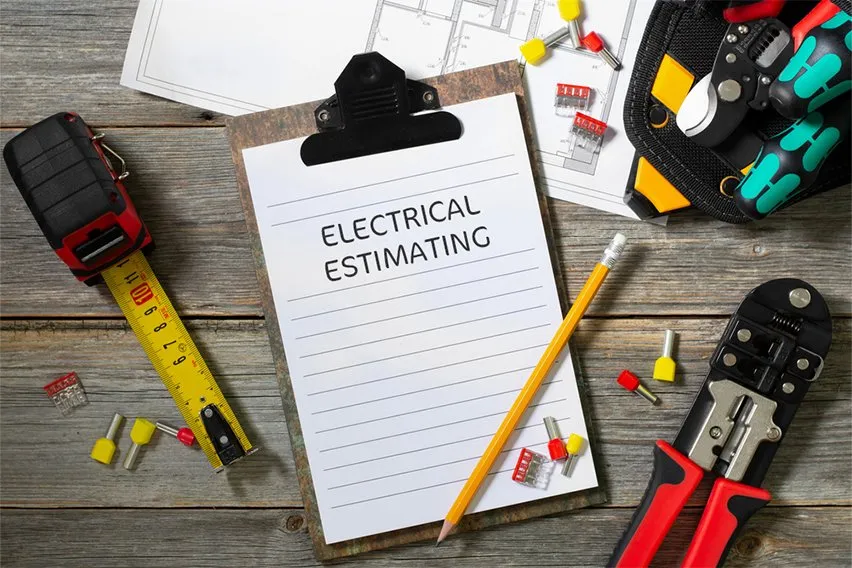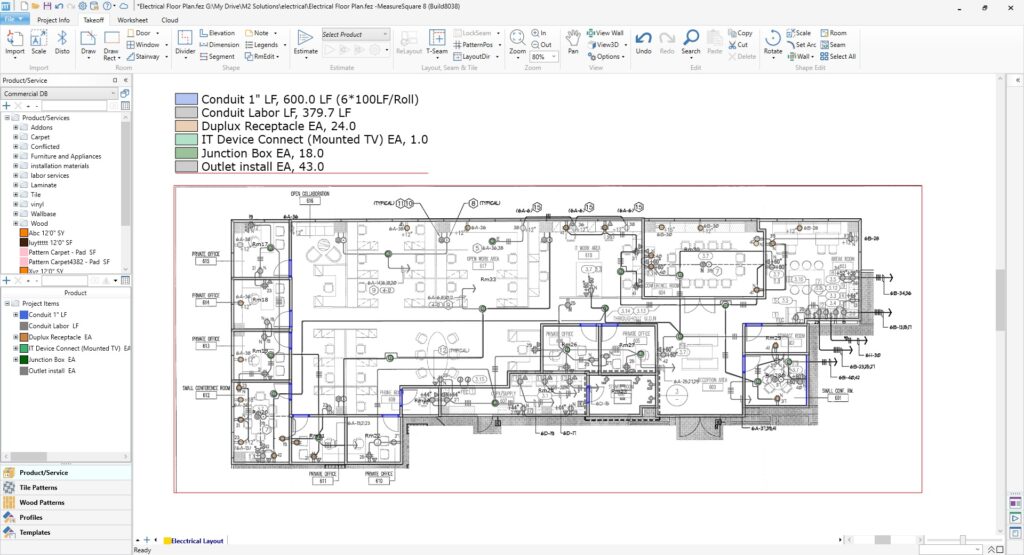Navigating the Complexities of Electric Estimating: Finest Practices for Successful Quotes and Budgeting
As each project presents its distinct set of variables and obstacles, mastering the art of estimation needs a delicate balance of technological competence and tactical planning. From navigating changing product expenses to carrying out ingenious innovations, the landscape of electrical evaluation demands a meticulous method to accomplish success and affordable edge.
Recognizing Material Costs
Comprehending material expenses is a basic aspect of precise electrical estimating in construction tasks. The price of materials stands for a considerable portion of the overall task costs and can significantly affect the competitiveness and earnings of a quote. When approximating material costs, it is critical to take into consideration aspects such as the type and amount of products called for, present market prices, prospective variations in costs, and any special order or shipment charges that may apply.
To make sure specific estimates, specialists must remain notified concerning the current patterns and advancements in the materials market. Building strong relationships with suppliers can additionally give valuable insights and potentially lead to cost-saving chances. Additionally, making use of specialized software or devices designed for product expense estimate can enhance the process and improve precision.
Accurately Approximating Labor Expenses
To make sure the monetary feasibility of a construction project, accurate estimation of labor expenses is vital in identifying the overall expenses entailed. Labor expenses commonly comprise a considerable section of the overall project budget plan, making precise estimate crucial for effective project conclusion within spending plan restraints. When estimating labor expenditures for an electric job, aspects such as the scope of work, required ability degrees, project timeline, and labor prices have to be very carefully taken into consideration.
One secret facet of accurately approximating labor expenditures is recognizing the certain jobs involved in the job and the matching labor demands. Break down the job into individual parts and appoint labor hours to each task based on previous experience or industry standards. Furthermore, consider any potential difficulties or unforeseen conditions that may affect labor performance and adjust the price quotes accordingly.
Collaboration with task supervisors, electric contractors, and other stakeholders can additionally supply important insights into labor requirements and assist refine the price quotes. Concept Electrical Estimating. By incorporating all appropriate aspects and utilizing market best practices, electrical estimators can enhance the accuracy of labor price estimation and improve the total success of the project
Leveraging Technology for Estimate
Including innovative technological devices and software can significantly streamline the process of approximating labor expenses for electrical projects, improving accuracy and efficiency in price assessments. Electrical estimators can leverage specialized software created for the sector, such as Accubid, McCormick Solutions, or ConEst IntelliBid, to automate the calculation of labor expenses based on job requirements, materials, and labor prices.
Financial Risk Monitoring in Bidding
Effective economic threat management is crucial for effective bidding in the affordable area of electric task estimate. Electric service providers deal with various monetary threats when preparing bids for tasks, including unreliable cost estimates, unpredicted task intricacies, and fluctuating product costs - CE Estimating. To minimize these threats, contractors must embrace tactical financial threat administration methods
One trick aspect of monetary risk management in bidding is conducting thorough expense evaluation. This entails meticulously examining all job requirements, such as materials, tools, labor, and overhead prices. By accurately approximating these expenses, professionals can minimize the risk of underbidding and possible monetary losses.
One more essential approach is to incorporate contingency strategies into the bidding procedure. Consisting of contingency funds in the proposal rate assists support versus unforeseen expense overruns or task hold-ups. Contractors should additionally remain notified regarding market patterns and product price changes to readjust their proposals appropriately.

Approaches for Affordable Prices
Offered the imperative nature of exact cost evaluation and calculated economic risk administration in bidding process, a fundamental aspect to consider in making certain competition is implementing effective approaches for pricing. Competitive prices methods are essential for electrical estimators to stick out in the marketplace while go to my site still preserving profitability. One efficient technique is to conduct detailed market research study to recognize current pricing patterns, competitor rates designs, and client assumptions. By staying educated about the market, estimators can adjust their pricing methods to remain competitive without endangering on high quality or profit margins.

Furthermore, executing tiered prices structures or supplying bundled solution plans can interest a wider variety of consumers with varying spending plans and needs (Concept Electrical Estimating). By giving alternatives that accommodate different client segments, estimators can increase their chances of winning proposals and securing rewarding projects. In general, a well-thought-out rates technique is important for remaining affordable in the electrical estimating sector
Final Thought
To conclude, effective electrical estimating calls for a thorough understanding of product prices, exact labor expenditure evaluation, application of innovation, efficient economic risk administration, and calculated affordable rates. By incorporating these finest techniques into the bidding process, professionals can boost their possibilities of remaining and winning proposals within spending plan. It is imperative for electrical estimators to continuously refine their abilities and stay upgraded on sector trends to navigate the complexities of estimating effectively.
Labor expenditures generally comprise a considerable portion of the overall task budget plan, making exact estimate vital for successful task completion within budget plan restrictions. When approximating labor expenditures for an electrical job, aspects such additional hints as the extent of job, needed ability levels, task timeline, and labor rates should be carefully thought about.
Including sophisticated technological tools and software program can dramatically enhance the process of estimating labor costs for electrical jobs, enhancing accuracy and efficiency in cost assessments. Electric estimators can leverage specialized software application developed for the industry, such as Accubid, McCormick Systems, or ConEst IntelliBid, to automate the calculation of labor expenses based on job demands, products, and labor prices. Electric service providers face different economic risks when preparing proposals for projects, consisting of imprecise price estimations, unanticipated job complexities, and rising and fall material rates.